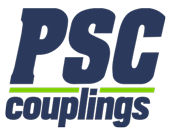Importance of Inspection
Inspecting a coupling to confirm proper installation is a requirement to ensure long useful life of the coupling and the connected equipment. The inspection steps can be separated into 4 main categories:
- Equipment Inspection Prior to Coupling Installation
- Inspection of Hub Installation
- Installed Coupling Inspection
- Inspection During Maintenance Intervals
1. Equipment Inspection Prior to Coupling Installation
Prior to the installation of any of the coupling components, the shaft alignment and DBSE (Distance Between Shaft Ends) should be checked. The shafts are commonly checked with laser alignment tools. It is important avoid laser aligning off the hubs if possible since the hub barrels or flanges may not be completely concentric to the shafts. (Note: This still may be required in some close coupled application.) The DBSE should be measure to make sure it matches the DBSE given to the coupling manufacturer when the coupling was specified. This step is especially important with the use of taper bores since the hubs need to be drawn up the shaft.
2. Inspection of Hub Installation
After the shafts are aligned, the hubs should be installed and inspected prior to the installation of the center spacer assembly. The hub barrel OD or flange OD runout should be checked. Also, the hub pilot face runout should be checked. Please verify the values measured are within the acceptable limits given by the coupling manufacturer.
3. Installed Coupling Inspection
After the coupling is installed and prior to start-up, the flex element gaps in the coupling should measured. The flex element gaps should be measure in 8 locations around the perimeter of the flex elements (every 45 degrees). During this process, record the maximum and minimum values as well as their locations on the coupling. Next, compare these values to the requirements from the coupling manufacturer. If the gaps are not within the minimum and maximum limits, check the bolting torques and make sure all piloted features are seated correctly. Then, remeasure the flex element gaps. If the gaps are not within the requirements, recheck the alignment of the shafts or determine if there is an external strain on the equipment causing misalignment.
4. Inspection During Maintenance Intervals
It is a good practice to visually inspect the conditions of the discs when regular maintenance on the system is performed. If there are any issues with the coupling, the issues will likely be visible during the inspection. For example, if there are fractures in the discs near the drive bolts or washers, there likely is a misalignment issue. Or, if there is red dust accumulating around the flex elements, there is likely an issue showing a symptom of fretting. If there any signs of disc damage, it would be appropriate to measure the flex element gap (as described in step 3 of this Tech Topic) to make sure any issues are identified and corrected before the system is restarted.
Summary
With these 4 steps of inspection, the user can confirm proper installation and should experience a long useful life of the coupling and the connected equipment. Please reference the coupling manufacture’s installation manual for additional steps suggested to confirm proper installation.
